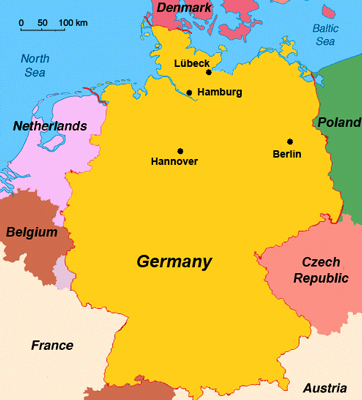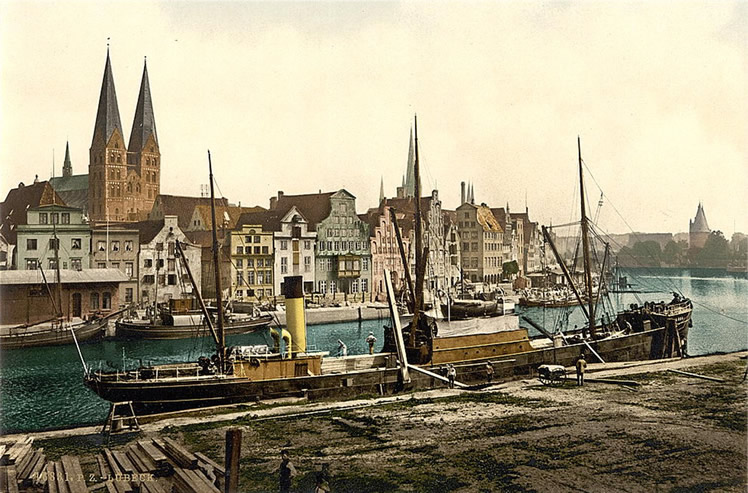 Chris Korte's New Zealand Genealogy Project
Chris Korte's New Zealand Genealogy Project
Lübeck, Germany
About page
This page has information about Lübeck in Germany. Katherine Dorothea HEINATZ, her daughter Maria Louisa Frederika ROGGENKAMP and son Johannes Joachim Heinrich ROSE were all born in Lübeck in the 19th Century. They migrated to New Zealand in 1869 with Dorothea's second husband Hans Friedrich Franz ROSE.
If you can provide additional information, or corrections, please contact (see Info menu).
Lübeck
Lübeck is the second largest city in Schleswig-Holstein, in northern Germany, and one of the major ports of Germany. Because of its Brick Gothic architectural heritage, the city is on UNESCO's list of World Heritage Sites. In 2016 it had a population of 217,000.
Lübeck was founded in the 12th century and prospered until the 16th century as the major trading center for northern Europe. It has remained a center for maritime commerce to this day, particularly with the Nordic countries. Despite the damage it suffered during the Second World War, the basic structure of the old city, consisting mainly of 15th- and 16th-century patrician residences, public monuments (the famous Holstentor brick gate), churches and salt storehouses, remains unaltered.
Situated on the Trave River, today Lübeck is the largest German port on the Baltic Sea. The old part of the town is an island enclosed by the Trave. The water-enclosed Old Town has roughly 1,800 listed buildings, historical alleyways and criss-crossed lanes.

19th Century Lübeck
The following description of Lübeck was first published in 1881 in Cyclopædia of Political Science, Political Economy, and the Political History of the United States by Maynard, Merrill, and Co., New York; edited by John J Lalor.
LÜBECK, a free Hanseatic city, situated on the Baltic sea, and forming part of the German empire. This city formerly possessed considerable importance; it was for four years the capital of the Hanseatic League, extending its influence from London to Novogorod, and from Bergen in Norway to the commercial cities of the Rhine and the Danube. But this brilliant epoch in its history has long passed away. Lübeck was, at the close of the year 1882, a city of 50,979 souls, (in 1857 it had 26,672 in the city and 4,045 in the suburbs), and the state does not contain in its entire extent (about 127 square miles) but 63,448 inhabitants.
Lübeck is known as a seaport, and commerce and navigation form its chief industry. This commerce may be estimated at about $50,000,000 a year, imports and exports combined, and over 2,200 vessels enter and sail from its port; in this number are included the arrival and departure of two steamboats daily during the summer months. Fifty ships constitute the force of its merchant marine, thirty of which are steamships.
The political constitution of Lübeck was relatively aristocratic down to the year 1848. While many of the fundamental laws of Germany were being modified through the influence of the French revolution, those of Lübeck also were amended. Since Dec. 23, 1851, a new constitution has been in force in the old Hanseatic capital.
A description of a democratic system of government follows: with citizens electing representatives to a 14 member senate and 120 member lower house.
Lutheranism is the religion of the greater part of the population, but it enjoys no special privileges; liberty of conscience is guaranteed to every citizen.
19th Century maps show Lübeck connected to an extensive railway network, with links to Travemünde at the mouth of the Trave, as well as lines to towns and states to the north, south, east and west.
 |  |
| Old postcard of Lübeck | Lübeck old town on the island between the rivers Trave and Wakenitz |
Page last updated on 24 July 2018.







